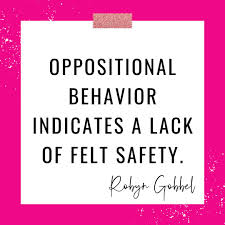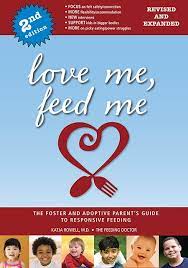“Felt Safety” means that adults arrange the environment and adjust their behavior so children can feel in a profound and basic way that they are truly safe in their home and with us.
~Karen Purvis, author of The Connected Child and founder of Trust Based Relational Intervention
“Felt Safety”
 All children need to feel safe. It is necessary for growth and development. Yet, it is hard to imagine being a young child and living in a home and not being or feeling safe. Unfortunately children live this reality more then we want to imagine. Karen Purvis, one of the most influential thinkers about attachment and adoption, coined the term “felt safety.” She discovered that if parents created a warm, trusting home, that children could thrive. Without this sense of deep security, children cannot flourish, learn, or grow, and basic functions are disrupted. The very basic function of eating is one factor impacted by growing up in a home with abuse and/or neglect: one that clearly does not include “felt safety.”
All children need to feel safe. It is necessary for growth and development. Yet, it is hard to imagine being a young child and living in a home and not being or feeling safe. Unfortunately children live this reality more then we want to imagine. Karen Purvis, one of the most influential thinkers about attachment and adoption, coined the term “felt safety.” She discovered that if parents created a warm, trusting home, that children could thrive. Without this sense of deep security, children cannot flourish, learn, or grow, and basic functions are disrupted. The very basic function of eating is one factor impacted by growing up in a home with abuse and/or neglect: one that clearly does not include “felt safety.”

In her book, Love Me, Feed Me, Dr. Katja Rowell applies the concept of “felt safety” to food issues with foster and adopted children. She insists that children need to have calm, regulated bodies before we can help with better nutrition, distorted views of food, and bad habits leftover from their past. Borrowing from Purvis, Dr. Rowell explains that “felt safety” not only affects the nervous system, but the whole internal working system within the body. She writes about a slew of different ways to intentionally create “felt safety” so you can stop the food power struggles and create a more peaceful and healthy family. When “felt safety” is present, we can connect to our bodies and feel if we are hungry or full. Without this, if your child is constantly in a fight or flight mode, they are not able to feel any connection to their bodies, besides fear. Often these children, when placed in a safe home, will gorge on food as they may be worried there won’t be any tomorrow, or perhaps, they do not feel the full signals from their bodies. Bottom line is that first you connect to your child, help them to regulate, and then you can truly help them learn how to eat well.
Responsive Feeding
Responsive feeding is a parenting/feeding strategy that encourages parents to stay attuned to their children, prioritize relationship building, and intentionally create “felt safety” while helping their child eat nutritiously without struggles. Responsive eating is a strategy originally developed to use with newborns and infants to encourage parents to attend to their baby’s hunger needs. Through this process, the caregiver teaches their baby if their belly is hungry or happy. The end result is connection between parent and child, a child who approaches food with a healthy outlook, and makes nutritious choices. Dr. Rowell in Love Me, Feed Me, adapted responsive eating for foster and adopted children, thus creating a structured, consistent, and reliable safe eating environment that encourages children to rely on hunger cues within their bodies. It is a method that each family can use when they are just plain tired of all the power struggles, anxieties, and concerns over foods. Responsive eating is tailored to each child’s unique needs. Families are instructed to create calm before they eat and practice ways to regulate before they sit down to eat. Responsive eating means eating together as a family and all meals are served family style. To learn more about responsive eating, Jewish Family Service has Love me, Feed Me in our adoption and foster care lending library. Feel free to reach out to Kim Kupfer to learn more.
Tying it All Together
At the end of the day, if you adopt the responsive feeding techniques, then you are on your way to creating “felt safety” in your home so then you can teach your child how to have a healthy relationship with their body and the food they eat. The idea is to re-teach your adopted child what they missed when they were a baby. Connection to you and connection to their bodies. It takes consistency, repetition, and hard work on the front end. Rewiring your child’s brain so they can learn to have positive and pleasurable associations with eating is well worth it. Helping your child to learn to regulate their body and remain in touch is necessary to help your adopted child heal from their trauma. Read the next article for some real life strategies to help you apply these concepts to your own family. Prioritize creating connection and safety so your child can and will choose to eat that broccoli and those apples. “Felt safety” first, vegetables later.





